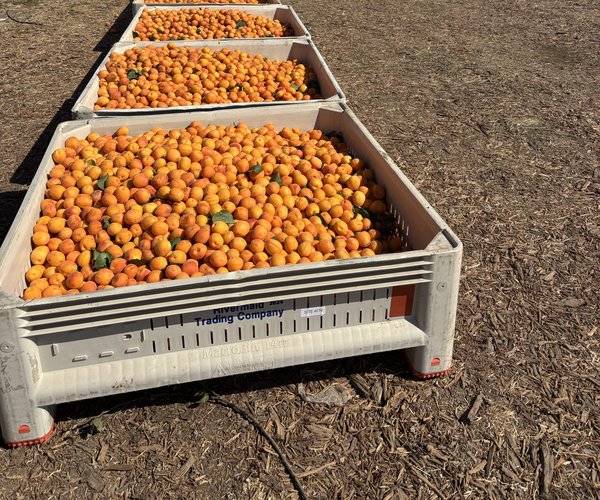Gov. Gavin Newsom unveiled Friday the Blueprint for a Safer Economy, a plan for a slow re-opening of California's economy with the mindset that the state will be dealing with COVID-19 for the long haul.
“This Blueprint is statewide, stringent and slow,” said Gov. Newsom. “We have made notable progress over recent weeks, but the disease is still too widespread across the state. COVID-19 will be with us for a long time and we all need to adapt. We need to live differently. And we need to minimize exposure for our health, for our families and for our communities.”
Based on recent data, each county will fall into one of four colored tiers – Purple (Widespread), Red (Substantial), Orange (Moderate) and Yellow (Minimal) – based on how prevalent COVID-19 is in each county and the extent of community spread. That color will indicate how sectors can operate.
For example, in the Purple tier where the disease is widespread, restaurants can only operate outdoors. But once a county has achieved a lower level of disease transmission and moved into the Red (Substantial) tier, restaurants can operate with 25 percent capacity indoors or 100 patrons, whichever is fewer.
It relies on two leading health metrics: number of cases per 100,000 residents and percentage of COVID-19 tests that come back positive. In addition, counties will also be required to show they are targeting resources and making the greatest efforts to prevent and fight COVID in communities and with individuals with the highest risk, and demonstrate improvements in outcomes.
Counties must remain in every tier but purple for a minimum of 21 days before being eligible to move into the next tier. Each Tuesday, California will update each county’s data for the previous week and make corresponding changes to tiers. In order to move into a less restrictive tier, a county must meet that tier’s criteria for two straight weeks.

Conversely, counties that fail to meet the metrics for their current tier for two consecutive weeks must move to the next most restrictive tier. The plan also includes an “emergency brake” where the state can intervene more immediately for concerning factors like hospitalizations.
Under the Blueprint in Stanislaus County hair salons and barbershops will be allowed to operate indoors with some modifications starting Aug. 31. Libraries can open with modifications and a capacity of less than 25 percent. Nail salons, gyms and museums can open outdoors with modifications. Family entertainment centers with outdoor options like mini-golf, batting cages and go-kart racing can open those outdoor activities. Bars that do not serve food and nightclubs must remain closed.
As of Friday, Stanislaus County has had 14,257 positive COVID-19 cases, with 845 presumed active and 253 deaths.
Schools in the Purple (Widespread) tier aren’t permitted to reopen for in-person instruction, unless they receive a waiver from their local health department for TK-6 grades. Schools can reopen for in-person instruction once their county has been in the Red (Substantial) tier for at least two weeks.
The vast majority of California's 58 counties are in the purple tier, including Stanislaus and Merced counties.
The re-opening plan comes as Foster Farms in Livingston was ordered to shut down because of a COVID-19 outbreak. The facility was ordered by the Merced County Public Health Department on Thursday to shut down and was then granted a 48-hour stay before the order had to go into effect.
An outbreak at the facility is the largest cluster of cases in Merced County, with at least 358 positive cases and eight deaths.
"The numbers of known cases in the outbreak were largely based on employees choosing to test and voluntarily reporting to Foster Farms," the county public health department wrote in a news release. "The true spread of COVID-19 in the Foster Farms Livingston Facility remains unknown."
Near the end of June, as the cases began to mount at the facility but before any deaths, the health department conducted a walk-through of the facility and provided recommendations to control the outbreak. These included making significant changes to the employee break spaces and performing widespread testing of employees within the facility.
The health department continued to advocate for more testing at the Foster Farms facility through much of July. By late July, Foster Farms had “tested less than 10 percent of the department with the largest impact within the facility (less than 100 employees total). Over 25 percent of the employees screened at this time tested positive. However, expanded testing within the department was not completed for an additional three weeks and subsequently, three fatalities were linked to that department alone," the health department stated.
The health department, along with CalOSHA conducted another walk through on Aug. 3 and found that the recommendations made in June had not been implemented. On Aug. 5 and Aug. 11, the Merced County Health Officer issued directives to Foster Farms providing specific direction on testing requirements and other safety measures to control the spread of COVID-19 within the Livingston facility. Those directives required immediate COVID-19 testing of all permanent, volunteer and temporary employees who share air within a facility that has an outbreak.
Once an outbreak is confirmed within a building, it isn’t cleared from outbreak protocol until the building reports no additional cases for two consecutive weeks or until testing of the building shows less than 1 percent of the workforce is COVID-19 positive.
"Since the August 5th directive was issued, the spread of COVID-19 within the facility has not been contained and active outbreaks continue to exist, posing a significant threat to Foster Farms employees and the surrounding community," the health department wrote. "Furthermore, testing as required by the Health Directive had not been completed and it is unclear whether the temporary workers were included in testing, as recommended by MCDPH. Due to the number of deaths and a need to quickly test both permanent and temporary employees at the Foster Farms Livingston Facility, the Merced County Health Officer has ordered the Foster Farms Poultry Processing Plant to close until the plant is able to reopen safely, as approved by the Health Officer. MCDPH will continue to work with Foster Farms throughout this process."
The State Attorney General’s Office, California Department of Public Health and MCDPH worked with Foster Farms to limit the impact of the closure and could not reach agreement. Temporarily shutting down a food production facility is the last option available in getting this outbreak under control.
“If we’re going to keep food on our tables during this pandemic, we must do a better job of protecting the essential workers who are putting it there. That means standing up for the people in our poultry facilities, agricultural fields, meat processing plants, restaurants, grocery stores, and more,” said California Attorney General Xavier Becerra. “Foster Farms’ poultry operation in Livingston, California has experienced an alarming spread of COVID-19 among its workers. Nobody can ignore the facts: It’s time to hit the reset button on Foster Farms’ Livingston plant.”
“In view of increasing deaths and uncontrolled COVID-19 cases, the decision was made to order the Livingston Plant within the Foster Farms Livingston Complex closed until acceptable safety measures are in place,” said Dr. Salvador Sandoval, Merced County’s Public Health Officer. “Our charge is to protect the public’s health, even in the face of difficult decisions. The closure of this plant is the only way to get the outbreak at Foster Farms swiftly under control. Our hearts are with the eight families who have lost a loved one.”
Merced County has had 7,814 confirmed COVID-19 cases as of Thursday. Of those, 1,253 are presumed active and 114 have died.









